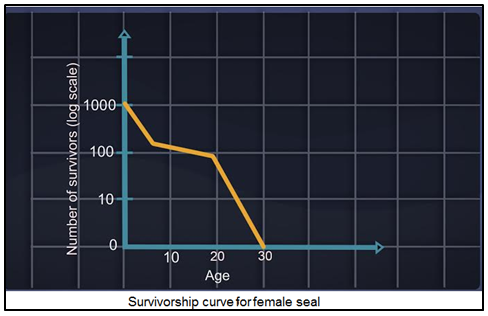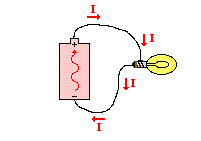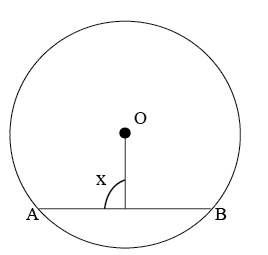12th Grade > Biology
NEURAL CONTROL AND COORDINATION MCQs
Total Questions : 57
| Page 4 of 6 pages
Answer: Option C. -> Piamater
:
C
The human brain is well protected by the skull. Inside the skull, the brain is covered by cranial meninges consisting of an outer layer called dura mater, a very thin middle layer called arachnoid mater and an inner layer (which is in contact with the brain tissue) called pia mater. Pia mater, often referred to as simply thepia, is the delicate innermost layer of the meninges and contours the folds and crevices of the brain.
:
C
The human brain is well protected by the skull. Inside the skull, the brain is covered by cranial meninges consisting of an outer layer called dura mater, a very thin middle layer called arachnoid mater and an inner layer (which is in contact with the brain tissue) called pia mater. Pia mater, often referred to as simply thepia, is the delicate innermost layer of the meninges and contours the folds and crevices of the brain.
Answer: Option D. -> 4
:
D
There are two types of photoreceptor cells namely Rods and Cones.
1. Cones are concentrated in the center of the retina, contains photopigment called iodopsin. Cones responsible for daylight (photopic) vision and color vision
2. Rods are evenly distributed all over the retina, contains a photopigment called rhodopsin or visual purple, which contain a derivative of Vitamin-A. Rods responsible for twilight (scotopic) vision
And visual acuity not specifically linked to the photoreceptor cells but many different aspects of vision.
So, 4th is the correct differentiation between rod and cone.
:
D
There are two types of photoreceptor cells namely Rods and Cones.
1. Cones are concentrated in the center of the retina, contains photopigment called iodopsin. Cones responsible for daylight (photopic) vision and color vision
2. Rods are evenly distributed all over the retina, contains a photopigment called rhodopsin or visual purple, which contain a derivative of Vitamin-A. Rods responsible for twilight (scotopic) vision
And visual acuity not specifically linked to the photoreceptor cells but many different aspects of vision.
So, 4th is the correct differentiation between rod and cone.
Answer: Option D. -> i).➡ b., ii).➡ a., iii).➡ d., iv). ➡ c.
:
D
In reference; neurons with their criteria of classification :
i). Multipolar ➡ is a neuron with (b.) One axon and Several dendrites
ii). Bipolar ➡ is a neuron with (a.) One axon and One dendrite
iii). Unipolar ➡ is a neuron with (d.) Cell body with One axon only
iv). Pseudo Unipolar ➡ is a neuron with (c.) One cell process that splits into two axons

Therefore, the correct option is D. – i).➡ b., ii).➡ a., iii).➡ d., iv). ➡ c.
:
D
In reference; neurons with their criteria of classification :
i). Multipolar ➡ is a neuron with (b.) One axon and Several dendrites
ii). Bipolar ➡ is a neuron with (a.) One axon and One dendrite
iii). Unipolar ➡ is a neuron with (d.) Cell body with One axon only
iv). Pseudo Unipolar ➡ is a neuron with (c.) One cell process that splits into two axons

Therefore, the correct option is D. – i).➡ b., ii).➡ a., iii).➡ d., iv). ➡ c.
Answer: Option B. -> Myelinated fibre
:
B
Saltatory conduction(from the Latin saltare, to hop or leap) is the propagation of action potentials along myelinated axons from one node of Ranvier to the next node, increasing theconductionvelocity of action potentials.
:
B
Saltatory conduction(from the Latin saltare, to hop or leap) is the propagation of action potentials along myelinated axons from one node of Ranvier to the next node, increasing theconductionvelocity of action potentials.
Answer: Option B. -> Threshold potential
:
B
Threshold potential can be defined as the state of depolarisation at which an action potential is sure to fire. When a neuronal membrane depolarizes to about -55mV, the voltage gated (Na+) channels open. Once these channels open there is no preventing an action potential because these channels, regulated by voltage open causing a positive cascade i.e. opening of these channels depolarises the membrane further by allowing (Na+) ions inside the cell and more depolarisation opens more voltage gated sodium channels.
:
B
Threshold potential can be defined as the state of depolarisation at which an action potential is sure to fire. When a neuronal membrane depolarizes to about -55mV, the voltage gated (Na+) channels open. Once these channels open there is no preventing an action potential because these channels, regulated by voltage open causing a positive cascade i.e. opening of these channels depolarises the membrane further by allowing (Na+) ions inside the cell and more depolarisation opens more voltage gated sodium channels.
Answer: Option C. -> Assertion [A] is True and Reason [R] is True and is a correct explanation to [A].
:
C
Sympathetic and parasympathetic have opposing functions. The sympathetic system makes the body readyfor Fight or Flight response, while parasympathetic system helps return the body functions to rest levels. For eg. the sympathetic fibres increases the rate and intensity of heartbeat, constrict most blood vessels and raise the arterial blood pressure, thus preparing the body for action. The parasympathetic fibres however decrease the rate of heartbeat, dilate many blood vessels and lower the arterial blood pressure.
:
C
Sympathetic and parasympathetic have opposing functions. The sympathetic system makes the body readyfor Fight or Flight response, while parasympathetic system helps return the body functions to rest levels. For eg. the sympathetic fibres increases the rate and intensity of heartbeat, constrict most blood vessels and raise the arterial blood pressure, thus preparing the body for action. The parasympathetic fibres however decrease the rate of heartbeat, dilate many blood vessels and lower the arterial blood pressure.
Answer: Option D. -> Essential for nerve impulse propagation
:
D
When a stimulus is applied at a site on the polarised membrane, the membrane at the site A becomes freely permeable to Na+.This leads to a rapid influx of Na+ followed by the reversal of the polarity at that site, i.e., the outer surface of the membrane becomes negatively charged and the inner side becomes positively charged. The polarity of the membrane at the site A is thus reversed and hence depolarised. The electrical potential difference across the plasma membrane at the site A is called the action potential. This change in membrane potential spreads to the nearby sites by changing the membrane permeability to Na+ in these regions, causing the membrane depolarisation, which is then propagated further down an axon and is in fact termed as a nerve impulse.

:
D
When a stimulus is applied at a site on the polarised membrane, the membrane at the site A becomes freely permeable to Na+.This leads to a rapid influx of Na+ followed by the reversal of the polarity at that site, i.e., the outer surface of the membrane becomes negatively charged and the inner side becomes positively charged. The polarity of the membrane at the site A is thus reversed and hence depolarised. The electrical potential difference across the plasma membrane at the site A is called the action potential. This change in membrane potential spreads to the nearby sites by changing the membrane permeability to Na+ in these regions, causing the membrane depolarisation, which is then propagated further down an axon and is in fact termed as a nerve impulse.

Answer: Option B. -> Grey matter
:
B
The layer of cells which covers the cerebral hemisphere is called cerebral cortex and is thrown into prominent folds. The cerebral cortex is referred to as the grey matter
due to its greyish appearance. The neuron cell bodies are concentrated here giving the colour. The cerebral cortex contains motor areas, sensory areas and large regions that are neither clearly sensory nor motor in function.
:
B
The layer of cells which covers the cerebral hemisphere is called cerebral cortex and is thrown into prominent folds. The cerebral cortex is referred to as the grey matter
due to its greyish appearance. The neuron cell bodies are concentrated here giving the colour. The cerebral cortex contains motor areas, sensory areas and large regions that are neither clearly sensory nor motor in function.
Answer: Option C. -> Neurotransmitters are released by the axon endings and not by dendrites
:
C
The transmissionof theimpulse occurs via release, diffusion, receptor binding of neurotransmitter molecules andunidirectionalcommunication between neurons. Neurotransmitters are released at axon terminals.The axons transmit nerve impulses away from thecell body to a synapse or to a neuro-muscular junction.
:
C
The transmissionof theimpulse occurs via release, diffusion, receptor binding of neurotransmitter molecules andunidirectionalcommunication between neurons. Neurotransmitters are released at axon terminals.The axons transmit nerve impulses away from thecell body to a synapse or to a neuro-muscular junction.
Answer: Option B. -> Autonomic nervous system
:
B
The autonomic nervous system (ANS) is a division of the peripheral nervous system that is entirely motor (a nerve carrying impulses from the brain or spinal cord to a muscle or gland) responsible for control of the bodily functions not consciously directed, such as breathing, the heartbeat, and digestive processes.
:
B
The autonomic nervous system (ANS) is a division of the peripheral nervous system that is entirely motor (a nerve carrying impulses from the brain or spinal cord to a muscle or gland) responsible for control of the bodily functions not consciously directed, such as breathing, the heartbeat, and digestive processes.

















